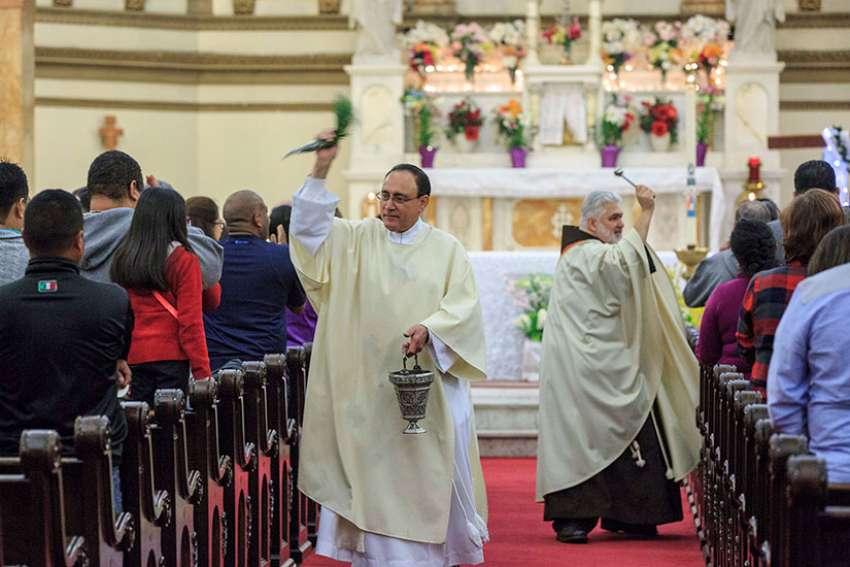The Roman Missal, which spells out specifics of how the vigil is to be celebrated, describes it as the “mother of all vigils” and says it is the “greatest and most noble of all solemnities and it is to be unique in every single church.”
That quote, “mother of all vigils,” comes from St. Augustine’s Sermon 209, which is pretty old, since the saint died in the year 430.
In other words, the tradition of the Easter Vigil and support for it, goes way back in the Church. But there was a falling out over this tradition for a long time and only in the 20th century did the Church recover what “got lost in the Middle Ages,” said Jesuit Fr. Bruce Morrill, the Edward A. Malloy professor of Catholic studies at Vanderbilt University Divinity School in Nashville, Tenn.
The priest said the vigil’s origins were in the early fourth century, but by the late Middle Ages, the celebration moved from a nighttime vigil to a Saturday morning Mass. Also around this time, the Church placed more emphasis on infant baptism than adult baptism. It became the norm until the liturgical and sacramental renewal of the Second Vatican Council led to a revival of the ancient catechumenate with the Rite of Christian Initiation of Adults.
But even before Vatican II, the move to revive the Easter Vigil began with Pope Pius XII in the 1950s restoring the celebration to the Saturday night before Easter and making additional changes.
Morrill said documentation of the ancient Church celebrating the Easter Vigil in Syria and North Africa notes that the sacraments of initiation — baptism, confirmation and first Communion — took place in a separate area while the congregation listened to words from Scripture and then the newly baptized were brought out to the congregation.
“It was very elaborate,” Morrill said. “If you wanted to see the risen Christ, you saw Him in the newly baptized.”
That symbolism continued after Easter. For the next eight days, the newly baptized were required to wear their white baptismal gowns to daily Mass where the bishop would give instructions about the meaning of baptism.
The Easter Vigil is loaded with symbolism. It must take place after dark and begins with the lighting of the fire outside and the inside lighting of the Paschal candle, whose light is passed on to individual candles.
There are seven Old Testament readings telling the salvation history, sung responses between readings and a sung proclamation called an Exsultet.
The Mass also includes the baptism, confirmation and first Communion of catechumens who are joining the Church, having prepared for this moment through the RCIA.
Paulist Fr. Larry Rice, director of the University Catholic Center at the University of Texas at Austin, said the idea of the Easter Vigil, by its nature, means “staying up through the night waiting and watching for the Lord’s resurrection.”
When Rice hears people say the Easter Vigil is just too long, he says it doesn’t matter if it’s two or three hours because it is so rich.
Part of the reason so many people love the vigil, he told CNS, is that it “hits us on a primal level.” Today, people rarely keep watch through the night, nor do they tell stories.
Morrill said the congregation at the Easter Vigil tends not to be “dressed in Easter finery” and is not the same as the packed church on Easter Sunday. Rice had a similar view, noting the Mass “doesn’t draw an enormous crowd,” but he said once people have experienced it, they usually want to come back because Easter Mass in comparison can “feel like the after party, not the actual party.”
A vigil Mass that stands out the most for him is one he celebrated in Santa Susanna in Rome, an ancient church with no windows or emergency exit signs that light up in the dark. Mass began, he said, in complete darkness, but the light of the single flame was “enough to illuminate the entire church.”
“That spoke to me so powerfully of the power of light to drive out darkness,” he said, in a way that he hadn’t experienced before or since.

